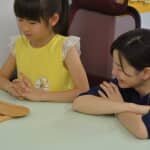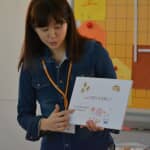Child-raising Shogi 1 November 2016
Shogi Changes Children!
Previously on our blog, we talked about the value of accepting one’s own defeat and awareness of the importance of diligent work through Shogi. It is often said that Shogi is effective for children to gain thinking skills. Yet, Shogi has more to offer. I think that Shogi has further more values.
So today I would like to share five points on the advantages of children’s learning Shogi as a professional Shogi player and mother of one boy and two girls.
1. Shogi helps children to lean good manners and etiquettes.
What I value most when I teach Shogi to children is “Mittsu no Rei (the three courtesies).”
This is always the first thing when I teach Shogi to children. (The following article also introduced the importance of greetings.)

“Mittsu no Rei” means the courtesies that we always demonstrate in playing Shogi.
“Onegai Shimasu (I’d like to rely on you to play the game with me.)”
“Makemashita (I have lost.)”
“Arigatou gozaimashita (The greeting one should make after the end of game and before leaving the board, which expresses one’s gratitude to the opponent for playing the game.)
Players quietly bow to each other to start off the game. When you realize that you have lost, you accept your defeat. The winner does not show joy of victory on the spot. He/she rather shows consideration toward the opponent humbly. The players exchange bows once again saying “Arigatou gozaimashita.” We practice the greetings in daily games. I think this practice reflects traditional Japanese culture, “We start with a bow and end with a bow.”
Learning manners and etiquettes through traditional Japanese culture.
I think this is one of the most important things that we should take into consideration on selecting Shogi as a children’s after school activity.
Children give me nice and cheerful greetings when I see them in Shogi tournaments. They have learnt manners and etiquettes through Shogi’s “Mittsu no Rei.”
I also think that Shogi helps children to learn calmness. The picture below was taken when I demonstrated Shogi match in front of children. I did not tell them to sit down in the Seize-Style, a formal Japanese sitting style to watch the game quietly. In fact, children were noisy and fussy until the onset of the match. Yet, as soon as the match began, they turned to be silent and watched over the board sitting in the Seize-Style.
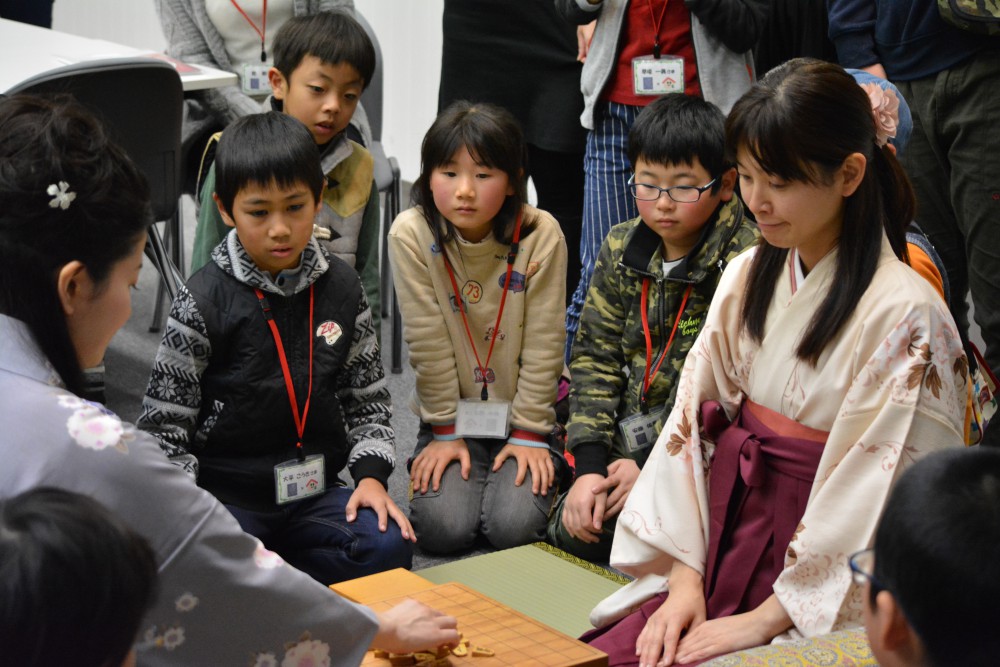
Habu-Sensei, a famous professional Shogi player, once stated in a magazine interview article that his body fell in a static mode in intense concentration. I think that being concentrated in Shogi helps even restless children to take a good posture, be attentive and quiet naturally. I realized that children sense atmosphere of Shogi and behave with decency. 🙂
2. Children will come to learn the lessons from defeat.
Shogi matches end with “Toryo (Resignation. Act of declaring one’s own loss of the game in his/her turn, which terminates the game.)” A player accepts his/her own defeat. Accepting one’s own loss means that we attribute the loss to ourselves, not others, and thus, it is very difficult. Each time I lose, I realize that a defeat is very difficult to accept even for adults and professional players.
Accepting one’s own loss means that he/she gains ability to overcome the loss. I think that is a very important point to live through our tough lives vigorously.
I strongly hope that you teach your children acceptance of own defeat and the importance of vigorously living our lives through learning Shogi.
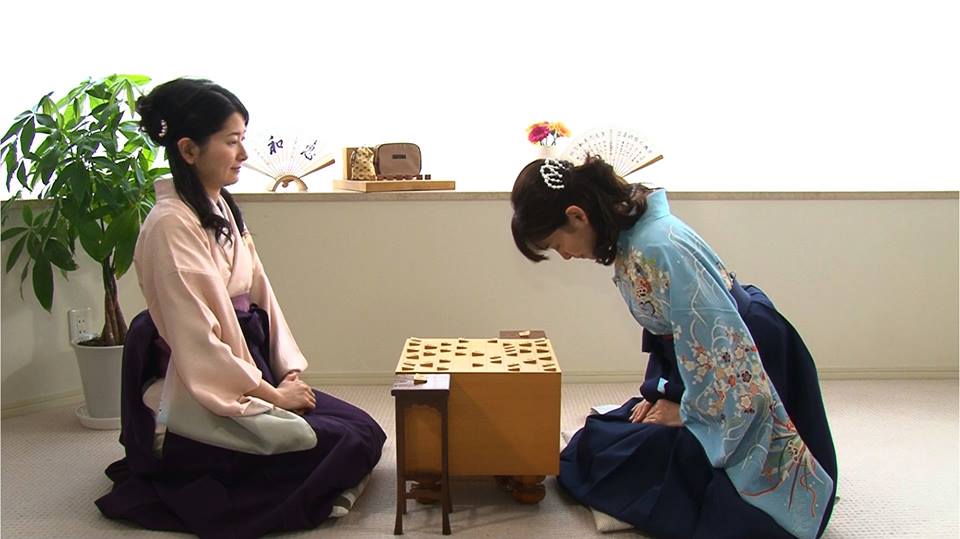
3. Everybody can enjoy intergenerational exchanges through Shogi.
I learnt Shogi from my father. As I started attending Shogi tournaments, I came to develop interchanges with people in the community. I realized that Shogi was a tool to communicate with people from various backgrounds, regardless of age and gender.
Physical and age gaps do not matter to play Shogi. I do not think there are many age free and gender free games in which a parent and a child, or a grandparent and a grandchild can seriously engage on the same stage. I think that it is also very meaningful to select Shogi for kids’ after school activity as an intergenerational communication tool between you and your children or your children and grandparents. As I am mother myself, I am glad to see that my son and my father who we can hardly see play Shogi together.
I often hear that people have less opportunities for in-person communication than before due to information technology advancement. Even under such a circumstance, Shogi gives us chances that people of different generations face one another and engage in “Kansousen (Postgame analysis. Discussion between both players after the game, and they reflect on the game, analyze possible variations, and try to find out conclusions based on right moves.) to talk together. I think this is another attractive aspect of Shogi.
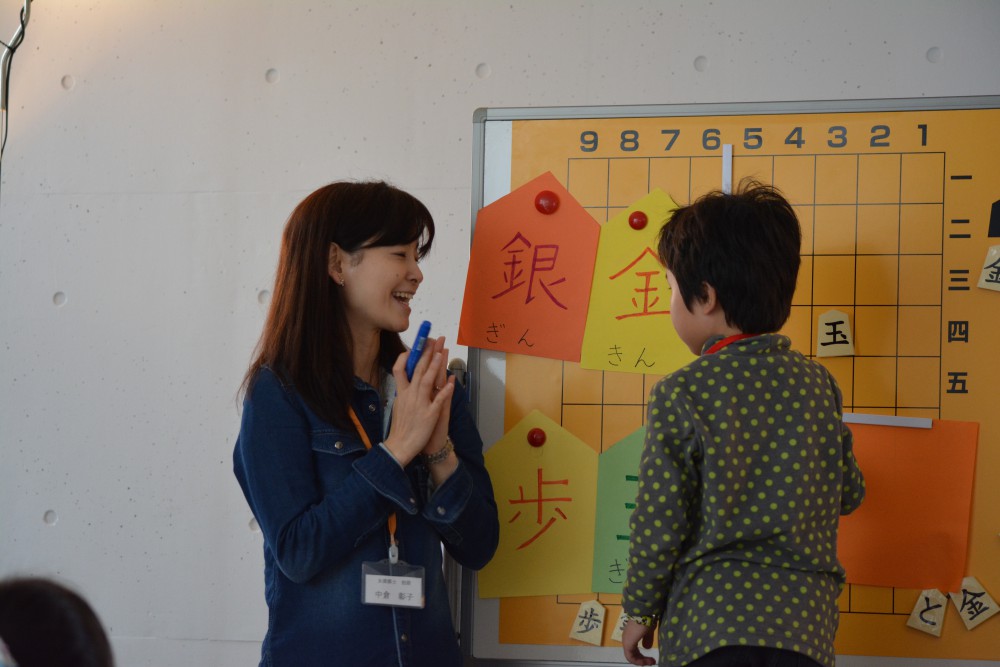
4. Children come to understand the importance of diligence and persistency.
As long as we have “Shogiban (Shogi board)” and “Koma (pieces), ” we can play Shogi anywhere. We do not need a sports ground or court, and can play regardless of weather. Snow or rain does not matter. As for “Tsume Shogi (Mate problem). A kind of Shogi problem, where a theme position is presented and one should find a way to mate Gyoku (king) with consecutive checks), we can work on it even when we are in transit.
Therefore, daily diligent work is inevitable to learn Shogi. One of my adult students told me that he worked on Tsume Shogi while commuting.
I recently read a thesis in which instructors with 30 years of Shogi experience stated that children who showed rapid progress spent about 90 minutes everyday for Shogi even from the very early stage.
Kosaku, Kawasaki, Teratani (2015). Kodomo to Otona, Shogi Noryoku no Gakushu to Hattasu: Dono yo ni Manabu ka, Naze Kodomo wa Nobiru no ka, Otona demo Hayaku Jotatsu Suru Koto wa Kano ka (Kodomo to Hatsuiku Hattatsu 13(3), 179-183, 2015) [Children and Adults, Learning and Development of Shogi Skills: How Do They Learn? Why Do Children Develop Quickly? Can Even Adult Learners Make a Fast Progress? (Children and Development 13(3), 179-183, 2015)]
I would like to share a case of one of my students who I have been teaching since last November. This student started taking Shogi lessons regularly when he was over 50. Initially, he could not win the game even when the opponent had six less pieces. Yet, as he has continued Shogi practices for about an hour and a half everyday, he now plays well when the opponent has two less pieces.
I really feel that “Little and often fills the purse” is true. I think that we can teach children the importance of continuation through Shogi practices when children make it a habit to practice Shogi everyday even just a little, like one page of Tsume Shogi before going to bed. I believe we can deliver children a message that they can gain amazing ability if they persistently continue learning Shogi about for six months.
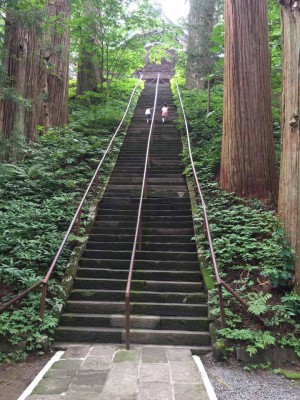
5. Shogi also makes thinking fun.
Best of all, I hope children find thinking fun through learning Shogi.
As mentioned above, the attraction of learning Shogi is that children can acquire thinking ability. At the same time, however, I hope that they learn Shogi not simply as intellectual training, rather they play Shogi for more comprehensive purposes.
Still, it is surely a very important point that children can acquire a thinking skill through Shogi, and thus, I would like to talk about Shogi from this perspective, finally.
I think the true value of thinking ability obtained through Shogi is not so visible as test scores. The value is not directly reflected in school grades. I think its value is more like ability to think in someone’s shoe or to find the best among several options.
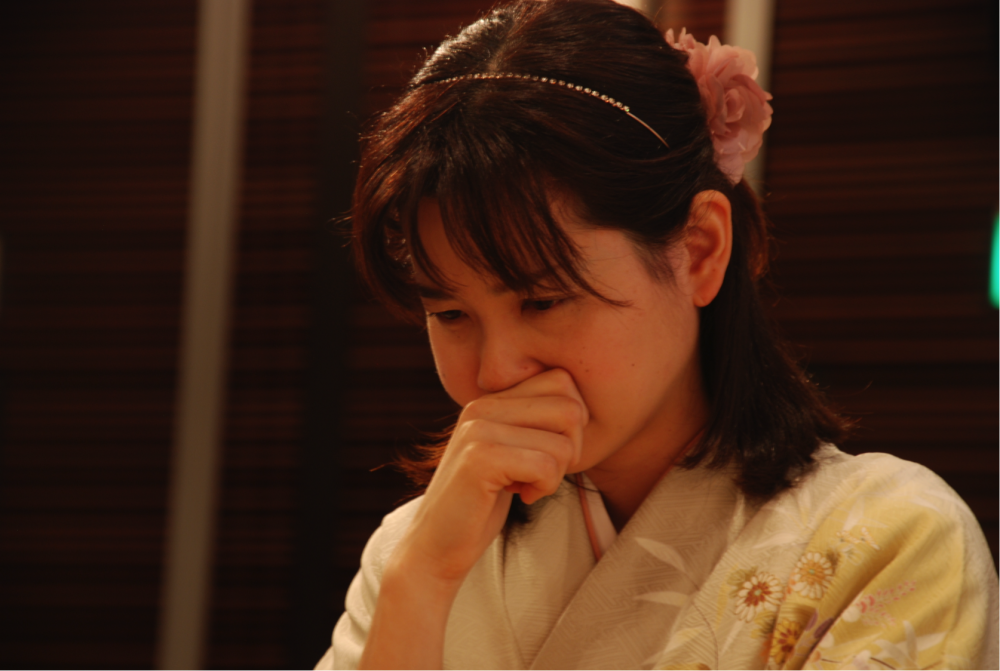
I hear business people often say that Shogi and business have something in common. Thinking ability obtained through Shogi will be a vital “life-long treasure” for children even if they would not be a pro in the future. Why don’t you offer your children a gift to learn Shogi for their future?
I have talked about five attractions of children’s taking Shogi lessons. You may think that Shogi is difficult to approach, yet it is not in fact. Parents do not need to feel a burden.
I would be more than happy if you feel like taking your children to Shogi lessons by reading this article.
